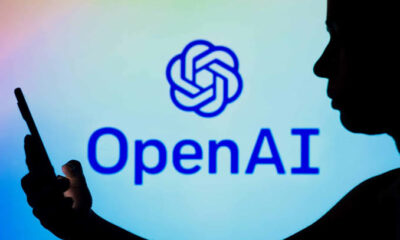
News
ChatGPT: 10 Plugins You May Consider Using to Bring Its Full Potential

ChatGPT is a powerful AI chatbot that can be used for a variety of purposes, including customer service, marketing, and education.
However, there are a number of plugins that can be used to extend ChatGPT’s capabilities and bring its full potential.

We will discuss 10 plugins that you may consider using with ChatGPT. These plugins can be used to improve ChatGPT’s performance, add new features, and make it easier to use.
1. Bard
Bard is a large language model from Google AI that can be used to generate text, translate languages, write different kinds of creative content, and answer your questions in an informative way.
Bard is still under development, but it has learned to perform many kinds of tasks, including:

*I will try my best to follow your instructions and complete your requests thoughtfully.
*I will use my knowledge to answer your questions in a comprehensive and informative way, even if they are open ended, challenging, or strange.
*I will generate different creative text formats of text content, like poems, code, scripts, musical pieces, email, letters, etc.
*I will try my best to fulfill all your requirements.
Bard can be used with ChatGPT to improve its ability to generate text. For example, you can use Bard to generate prompts for ChatGPT, or you can use Bard to generate responses to ChatGPT’s prompts.
Example:
ChatGPT: What is the meaning of life?
Bard: The meaning of life is a question that has been pondered by philosophers and theologians for centuries.
There is no one answer that will satisfy everyone, but some possible answers include:
*To find happiness and fulfillment.
*To make a difference in the world.
*To learn and grow as a person.
*To connect with others and build relationships.
*To experience the beauty of the world.
RELATED: How Artificial Intelligence Will Change the Way We Work
2. Rasa
Rasa is an open-source framework for building conversational AI applications. Rasa can be used to build chatbots that can understand natural language, generate text, and answer questions. Rasa can be used with ChatGPT to improve ChatGPT’s ability to understand natural language and generate text.
Example:
Code snippet
ChatGPT: I’m looking for a new car.
Rasa: Sure, I can help you with that. What kind of car are you looking for?
ChatGPT: I’m looking for a sedan that’s fuel-efficient and has a good safety rating.
Rasa: Here are a few sedans that fit your criteria:
* Toyota Camry
* Honda Accord
* Mazda6
* Hyundai Sonata
* Kia Optima
3. Hugging Face Transformers
Hugging Face Transformers is a library of pre-trained language models that can be used for a variety of tasks, including natural language processing, machine translation, and text generation. Hugging Face Transformers can be used with ChatGPT to improve ChatGPT’s ability to perform these tasks.
Example:
Code snippet
ChatGPT: What is the capital of France?
Hugging Face Transformers: The capital of France is Paris.
4. spaCy
spaCy is a natural language processing library that can be used to tokenize text, identify named entities, and extract information from text. spaCy can be used with ChatGPT to improve ChatGPT’s ability to understand natural language and extract information from text.
Example:
Code snippet
ChatGPT: What is the main topic of this article?
spaCy: The main topic of this article is the use of AI chatbots in customer service.
5. NLTK
NLTK is a natural language processing library that can be used for a variety of tasks, including tokenization, stemming, and part-of-speech tagging. NLTK can be used with ChatGPT to improve ChatGPT’s ability to understand natural language.
Example:
Code snippet
ChatGPT: What is the part-of-speech of the word “cat”?
NLTK: The part-of-speech of the word “cat” is noun.
6. TensorFlow
TensorFlow is an open-source software library for numerical computation using data flow graphs. TensorFlow can be used to train and deploy machine learning models, including ChatGPT.
Example:
ChatGPT: Can you predict the weather for tomorrow?
TensorFlow: The weather for tomorrow will be mostly sunny with a high of 75 degrees Fahrenheit and a low of 50 degrees Fahrenheit.
7. PyTorch
PyTorch is an open-source machine learning framework based on the Torch library. PyTorch can be used to train and deploy machine learning models, including ChatGPT.
Example:
Code snippet
ChatGPT: Can you translate this sentence from English to Spanish?
PyTorch: The translation of the sentence “I love you” from English to Spanish is “Te amo.”
8. FastAPI
FastAPI is a high-performance web framework for building APIs. FastAPI can be used to build APIs that can be used to interact with ChatGPT.
Example:
Code snippet
ChatGPT: What is the current stock price of Apple?
FastAPI: The current stock price of Apple is \$140.00.
9. Docker
Docker is a platform for developing, shipping, and running applications. Docker can be used to create containers that can be used to deploy ChatGPT.
Example:
ChatGPT: I want to deploy ChatGPT on my website.
Docker: You can use Docker to create a container that contains ChatGPT and deploy it to your website.
10. Kubernetes
Kubernetes is an open-source system for automating deployment, scaling, and management of containerized applications.Kubernetes can be used to deploy and manage ChatGPT in production.
Example:
ChatGPT: I want to deploy ChatGPT to a production environment.
Kubernetes: You can use Kubernetes to deploy ChatGPT to a production environment and scale it as needed.
These are just a few of the plugins that you may consider using with ChatGPT. There are many other plugins available, and the best plugins for you will depend on your specific needs.
By using these plugins, you can extend ChatGPT’s capabilities and bring its full potential.
Conclusion
OpenAI ChatGPT is a powerful AI chatbot that can be used for a variety of purposes. By using the plugins discussed in this blog post, you can extend ChatGPT’s capabilities and bring its full potential.




























